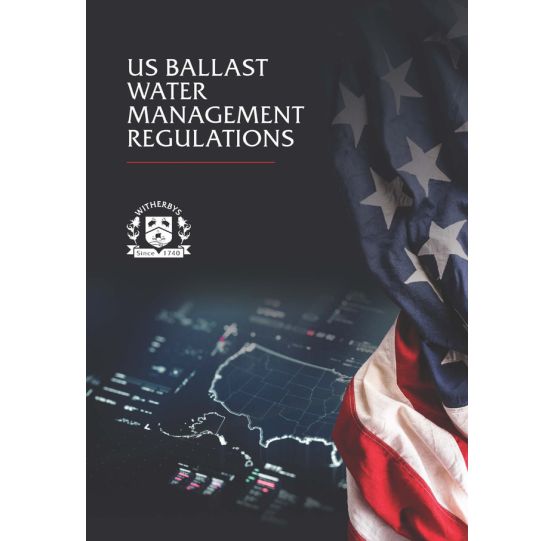US Ballast Water Management Regulations
S$400.83
March 2024
This publication provides a comprehensive overview of US ballast water management regulations, including federal to state level requirements, the development of future US legislation and ballast water exchange and treatment. It provides detailed information on the ballast water management systems (BWMS) that are type-approved by the US Coast Guard (USCG) for ballasting operations in US waters.
In stock
The US is not party to the global Ballast Water Management Convention and developed its own ballast water management regulations for vessels, which have been in full effect since January 2016. This guide sets out the current state and federal regulations in force, including up-to-date USCG and EPA requirements. US legislation requires that a BWMS that will operate in US waters must be type approved by the USCG. As of January 2024, 54 BWMS models have received such USCG type approval and this guide summarises the features of these BWMS in a useful data sheet format.
The guide looks in detail at future requirements under the Vessel Incidental Discharge Act (VIDA) 2018 and provides helpful operational methods, considerations and checklists for ballast water exchange.
The Appendices contain an updated list of Code of Federal Regulations (CFRs) relating to US ballast water management and systems, alongside VIDA.
Witherbys
Witherbys titles are developed using scripts developed by technical experts that are peer reviewed within work groups. Typically, they seek to improve understanding of the regulations, recommendations and guidelines issued by Industry.
Witherbys staff have significant expertise in the fields of navigation and hazardous cargoes as well as in the presentation of complex subjects in a graphic and easy to understand manner.
The release of untreated or improperly treated ballast water (BW) by vessels risks the transfer of potentially invasive aquatic organisms into new environments. National and international regulations to control the spread of non-indigenous aquatic species through the management of BW using ballast water exchange (BWE) have been in effect in most regions and ports for many years, but mandatory regulations have taken longer to finalise and implement.
The International Convention for the Control and Management of Ships' Ballast Water and Sediments has been in full effect since September 2019, but the United States (US) is not party to that Convention. The US developed its own regulations for vessels that ballast in US waters and these have been in full effect since January 2016.
As well as federal regulations, there are state level BWM requirements and this has resulted in a complicated range of BW requirements for vessel owners and operators. The Vessel Incidental Discharge Act (VIDA) 2018 was enacted in December 2018 to bring BW legislation in the US under one regulatory umbrella. However, the revised regulations will not be enforceable until at least December 2026 and the current US BW regulations (USCG and EPA) are in full force and effect until that time.
As at January 2024, 54 BWMS models have been Type Approved by the United States Coast Guard (USCG) for managing BW in US waters. Some BWMS have undergone several Type Approval certification revisions as the systems have been developed and improved over time. A Type Approval certificate may be revised for various reasons, including:
The use of alternate components
additional filters
changes to the manufacturer
the revised system can be installed in hazardous locations on US-flagged vessels
updated performance claim
additional models z revised hold time
alternate combinations of, for example, UV unit and filter model


